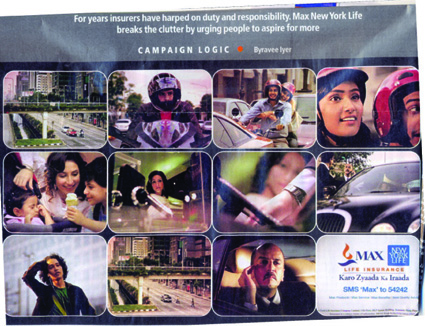For years insurers have harped on duty and responsibility. Max New York Life breaks the clutter by urging people to aspire for more.
A curly-haired youngster crossing a road looks in awe at a fancy bike. As the chap on the fancy bike rides along, he passes by another guy on a rather ordinary bike, but with a pretty girl behind him. The fancy bike rider gazes wistfully at the happy couple.
Meanwhile, the girl spots a mother with her two kids and becomes contemplative. The mother passes by a jewellery store and longingly admires a diamond necklace displayed in the window. Just then, the shopkeeper takes out the display and hands it over to a bald gentleman who then gets into his chauffer-driven car.
At a traffic stop, the man notices the curly-haired youngster, and wishfully runs his hand on his clean-as-a-whistle head. A voice-over follows: Khwahishon ke bina zindagi kya. Karo zyaada ka iraada (What’s life without desire. Wish for more).
Max New York Life Insurance’s new campaign, which broke on September 5, marks a strategic shift in the insurer’s positioning. Read the rest of this entry »
